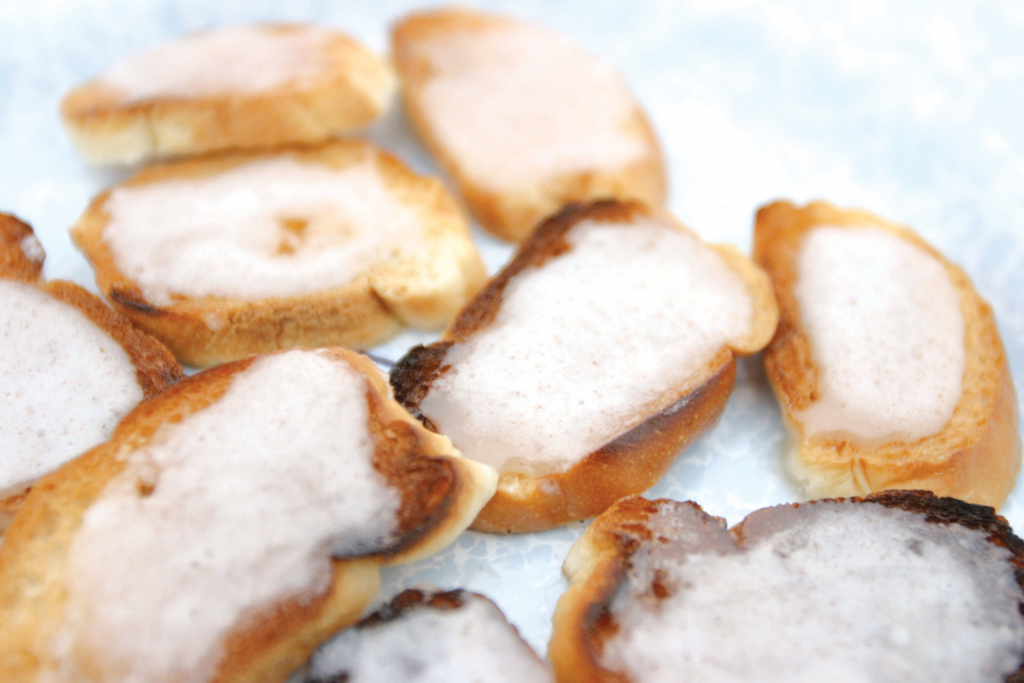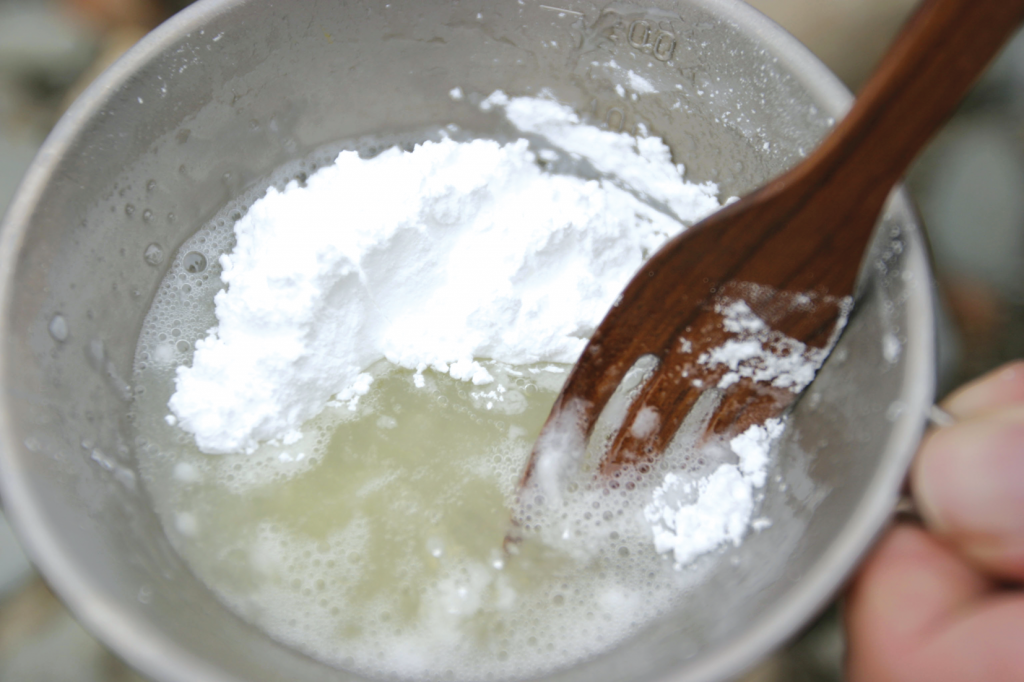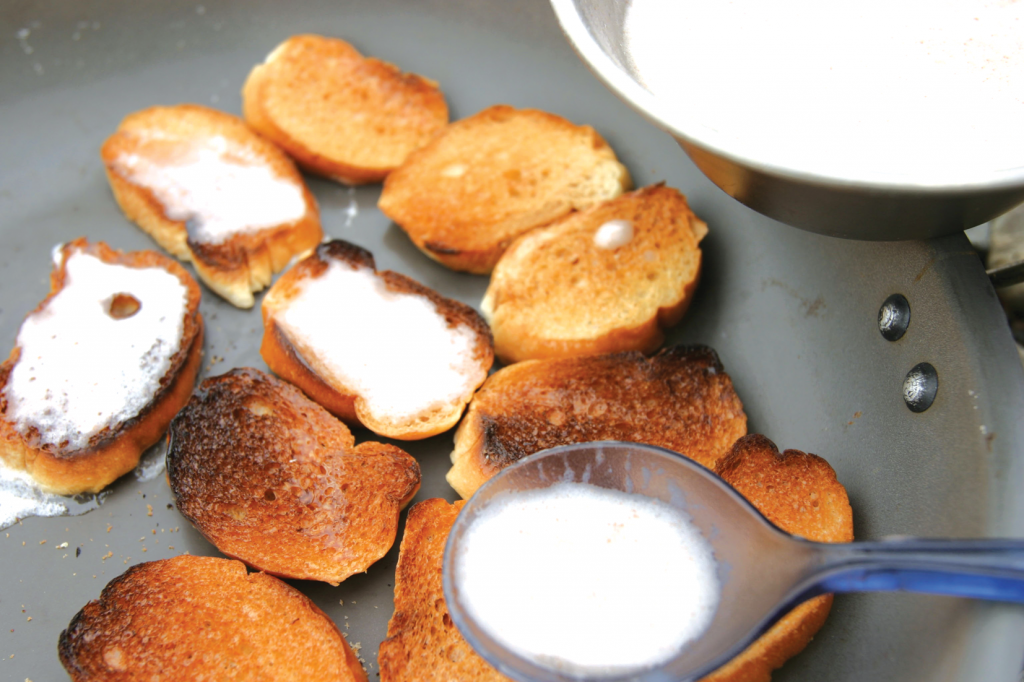
Ingredients
- Leftover bread
- Egg whites
- Sugar
- Powdered cinnamon
We’ve finally hit Part 3 in our exploration of what to do with left-over bread; this issue we shine the spotlight on biscotti, or “rusk” as it is referred to in Japan. Typically, biscotti is known for its sweet coating and many readers may have enjoyed it during their younger years. Biscotti also makes for a great portable snack on camping and hiking trips.
The word itself refers to twice-baked bread, a process which tends to remove any moisture, thus taking mold off your “things to worry about” list. In order to allow the bread to dry more quickly, biscotti is often cut into very thin slices. The sugar acts as a preservative agent (much in the same way it is employed in jams and jellies), but also adds volumes to the taste.
While biscotti styles of cooking are as varied as the people who prepare them, here we use egg whites and sugar. Egg yolks and sugar is a popular combination, as is lard and sugar; both provide the “glue” that keeps this dish together.
Personally, I have a penchant for cinnamon, which I add liberally to the mix. Pick your preference, whether it be a bit of lemon juice, vanilla, coconut powder or powdered cocoa. Some have even replaced the sugar with salt, added butter and mixed in garlic— a concoction that goes well with a glass or two of red wine.

1. Mix the egg whites thoroughly, adding in the sugar a bit at a time. For one egg white, use approximately 50-60 grams of sugar. At this point I always add some cinnamon.

2. Toast the thin slices of bread until they are well done, taking care not to let them burn. Top the toast with the mix and let it sit for one hour. Dig in when the dish is nice and hard.




